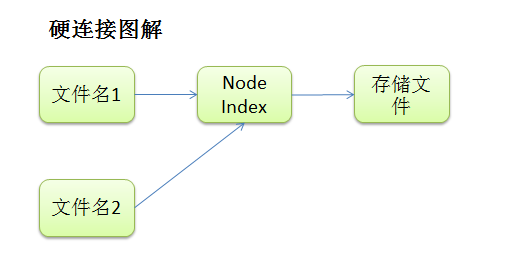How to drop the 1TB form in the mysql library
Jun 01, 2021 Article blog
Table of contents
If you ask how you can empty a table from
MySQL
database, many people will probably say, quite simply, just use
drop table t_test
statement.
This is really the newborn calf is not afraid of tigers, you really think so simple, go to the online business library
drop
a 1TB size table, resulting in a long time of business can not access the database, more serious, resulting in database crash, downtime is possible.
Let's talk about what's behind the
drop table
statement, and after the statement is executed, there are two main things to do
1, clear the Buffer Pool buffer
At
drop table
the
innodb
engine cleans up the block pages that correspond to the table in each
buffer pool
instance, and to avoid the impact on the system, the cleanup operation here is not the real
flush
but rather the pages involved are removed from the
flush
queue. H
owever, during the removal process, the deletion process holds the global lock for each
buffer pool
pool and then searches for the corresponding page in the
buffer pool
to remove it from
flush list
If there are too many pages in
buffer pool
that need to be searched and deleted, the traversal time increases, causing other transaction operations to be blocked and, in severe cases, the database to lock.
(Recommended course: MySQL tutorial.) )
One thing to note here is that if the
buffer pool
is set up very well, it will cause the traversal time to grow Clean up the buffer
buffer pool
which also includes cleaning up the data that
AHI
contains for this table,
AHI
functionality is not much to say here, mainly when the hierarchy of
b+tree
becomes higher, in order to avoid
b+tree
layer-by-layer search,
AHI
can query the corresponding data page directly according to a retrieval condition, skipping the step of layer-by-layer positioning.
Second, THE AHI TAKES UP 1/16 OF THE SIZE OF
buffer pool
AND IF THE ONLINE TABLE DATA IS NOT PARTICULARLY LARGE AND NOT SUPER-HIGH CONCURRON, IT IS NOT RECOMMENDED TO TURN ON AHI, CONSIDER TURNING OFF
AHI
FEATURE
mysql> SHOW GLOBAL VARIABLES LIKE 'innodb_adaptive_hash_index';
+----------------------------+-------+
| Variable_name | Value |
+----------------------------+-------+
| innodb_adaptive_hash_index | ON |
+----------------------------+-------+
1 row in set (0.01 sec)
mysql> SET GLOBAL innodb_adaptive_hash_index=OFF;
Query OK, 0 rows affected (0.00 sec)
mysql> SHOW GLOBAL VARIABLES LIKE 'innodb_adaptive_hash_index';
+----------------------------+-------+
| Variable_name | Value |
+----------------------------+-------+
| innodb_adaptive_hash_index | OFF |
+----------------------------+-------+
1 row in set (0.01 sec)
2, delete the corresponding disk data file ibd
When deleting data files, if the data files are too large, the deletion process produces a large number of
IO
and takes more time, causing disk
IO
overhead to soar and
CPU
loads to be too high, affecting the operation of other programs.
One of my good mates deleted a 1TB table in the online library, and for 20 minutes, the database was unresponsive, and finally the library crashed and restarted.
Now that you know drop
drop table
has done 2 things, optimize for these 2 things
On
Buffer Pool
the Buffer Pool buffer, to reduce the size of the
buffer pool
you can reasonably set
innodb_buffer_pool_instances
parameter, reduce the
buffer pool
block list scan time, and turn off
AHI
feature
In Step 2, you can cleverly take advantage of
linux
hard connection features to delay deleting real physical files.
First look at the hard-link diagram of the
linux
system

When multiple file names point to the same
INODE
at the same time, the reference number of this
INODE
N >1, and deleting any one of the file names will be quick. B
ecause its direct physical file block has not been deleted. J
ust deleted a pointer;
When the number of references to
INODE
is N-1, deleting the file requires that all blocks associated with the file be purged, so it can be time-consuming;
If you create a hard link to the
.ibd
file of the database table, when you delete the table, when you delete the physical file, you actually delete a pointer to the physical file, so the deletion will respond very quickly, about 1 second
Let's show you what to do
先创建表文件的硬链接
ln t_test.ibd t_test.ibd.bak
删除表
drop table t_test;
Finally, to really delete the physical files, free up the disk space occupied by the files, then the problem is, if the elegant deletion of physical files, here is recommended for everyone
coreutils
tool set of
truncate
commands
Of course, you need to install the relevant packages first
wget http://ftp.gnu.org/gnu/coreutils/coreutils-8.29.tar.xz
使用非root进行解压
tar -xvJf coreutils-8.29.tar.xz
cd coreutils-8.29
./configure
make
使用root进行make install
Once installed, you can write a script that is very elegantly distributed to delete large files, represented by
${i}G
10G at a time
#!/bin/bash
TRUNCATE=/usr/local/bin/truncate
for i in `seq 2194 -10 10 `;
do
sleep 2
$TRUNCATE -s ${i}G /data/mysql/t_test.ibd.hdlk
done
rm -rf /data/mysql/t_test.ibd.hdlk ;
Finally, give you a suggestion, do not do
drop table
operations during peak business hours, be sure to do in the low peak period of business.
(Recommended micro-class: MySQL micro-course.) )
Source: www.toutiao.com/a6863864032139411975/
These are
W3Cschool编程狮
about how to drop the 1TB form in the mysql library, I hope to help you.